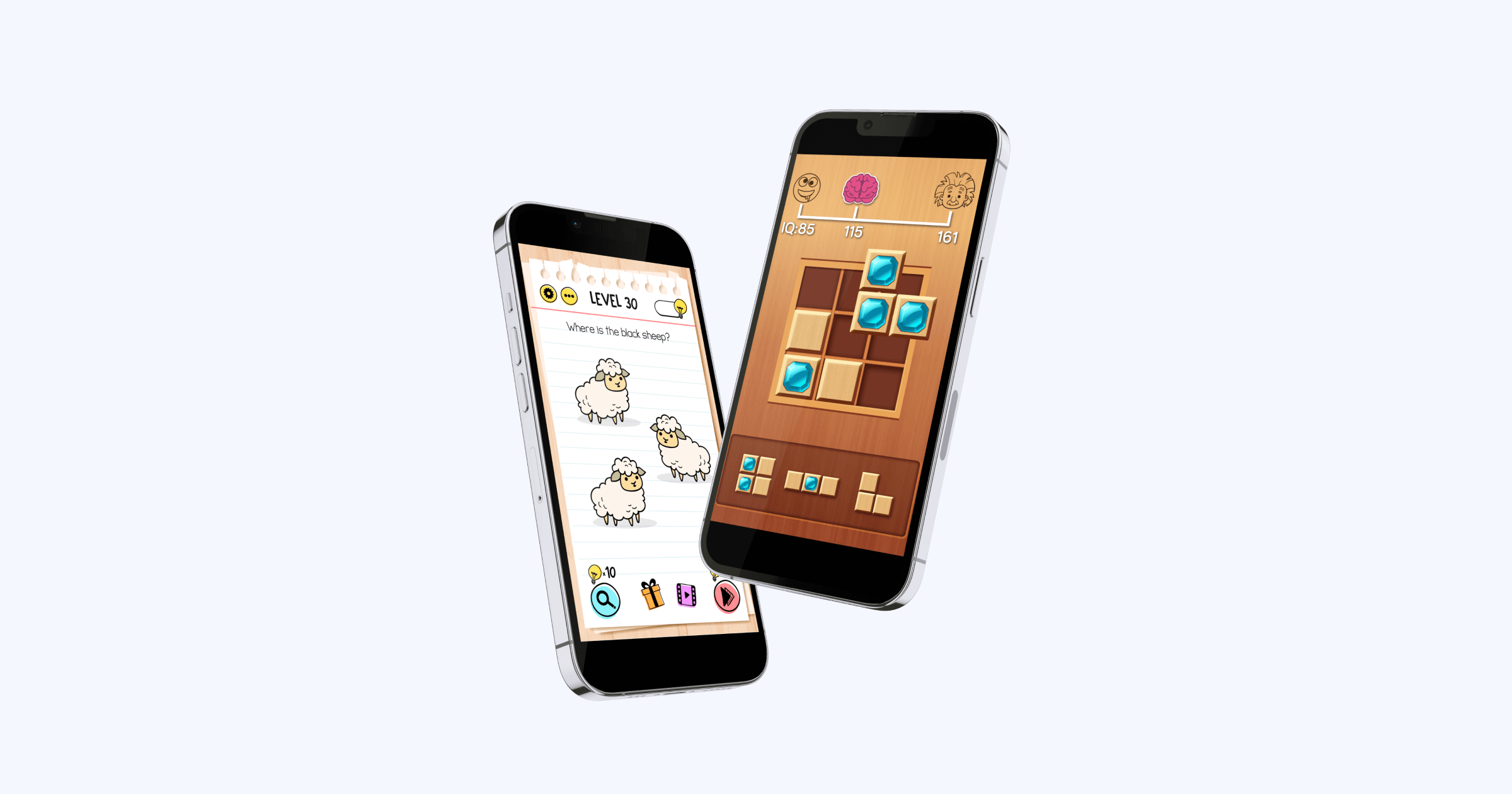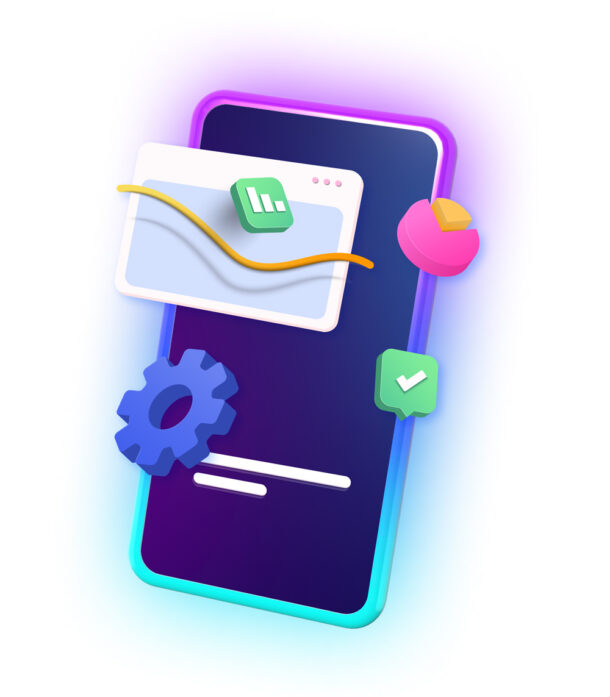Price increases are never well received by customers.
But there are times when even the product owner doesn’t have a say — someone else makes the rules, and all they can do is follow them.
Something similar has recently happened with IAP prices in mobile games.
The main culprit?
Apple.
Let’s dive a little further into this and explain why mobile game studios are increasing the prices of in-app purchases, by how much, and explore the differences between popular games.
IAP Prices Climbed by 40% in a Year

The rise of in-app purchase prices didn’t come overnight. It happened over a period of time and due to different factors.
According to Apptopia, the average IAP price on iOS in the US rose by 40% year on year. To be more precise, this increase happened between July 2021 and July 2022.
What about Android?
In the same timeframe, IAP prices on Android increased by “only” 9%.
As you can see, there is a significant difference between the price rise on iOS and Android.
Given that iOS users traditionally spend more money on apps, it only makes sense to try and make them spend even more. In 2022 alone, iOS users cashed out $92 billion on in-app purchases, while Android users spent $45 billion (Statista).
Will this gap continue to expand as the prices keep on rising? We’ll have to wait and see.
What Lies Behind the Rise of IAP Prices?
We’re living in economically turbulent times, so hardly anyone is surprised by any kind of price increase.
While global inflation is a major factor, there are a few other reasons behind rising IAP prices.
Apple’s Price and Tax Update
In September 2022, the Apple App Store announced price increases for apps and IAPs in select regions. This included the entire eurozone, Japan, and South Korea, among others.
Why these countries?
The update was based on changes in taxes and foreign exchange rates. Precisely, when it comes to international trade, the economies of these countries are linked to Euro.
To explain, Apple is based in the US and generates revenue in US dollars. Since the US dollar’s exchange rate has increased, App Store revenues in other currencies have decreased.
Following the update, the prices of IAPs automatically increased from 10% to 33.3%, depending on the region. The increase rate varies depending on the depreciation of each country’s currency against the US dollar.
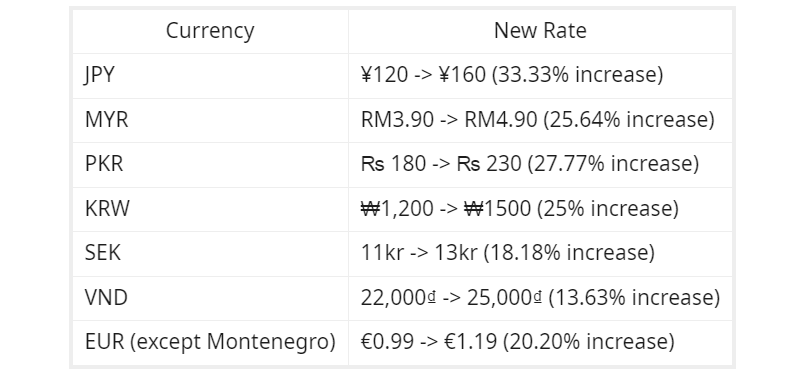
Let’s take Japan, for example.
In this country, in-app purchases that previously cost 120 yen (approx. $0.83) have increased to 160 yen (approx. $1.11). This is a 33.3% increase, the highest among all affected countries.
Why is that?
Because the US dollar rose by approximately 29% against the Japanese yen, Apple’s price increases in that market are similar.
Moreover, in January 2023, the App Store announced price increases in seven additional countries, including the UK.
Following all these increases, Apple has also announced more flexibility in setting IAP prices, starting in spring 2023. Thanks to this update, publishers will have 700 additional price points at their disposal.
Privacy Changes
A while before Apple updated its price tiers, it updated its privacy policy.
This caused a lot of changes.
Not just privacy-wise.
Among other things, the launch of ATT caused a significant increase in advertising costs. Since ATT made it more expensive to acquire new users, publishers started modifying their IAP prices.
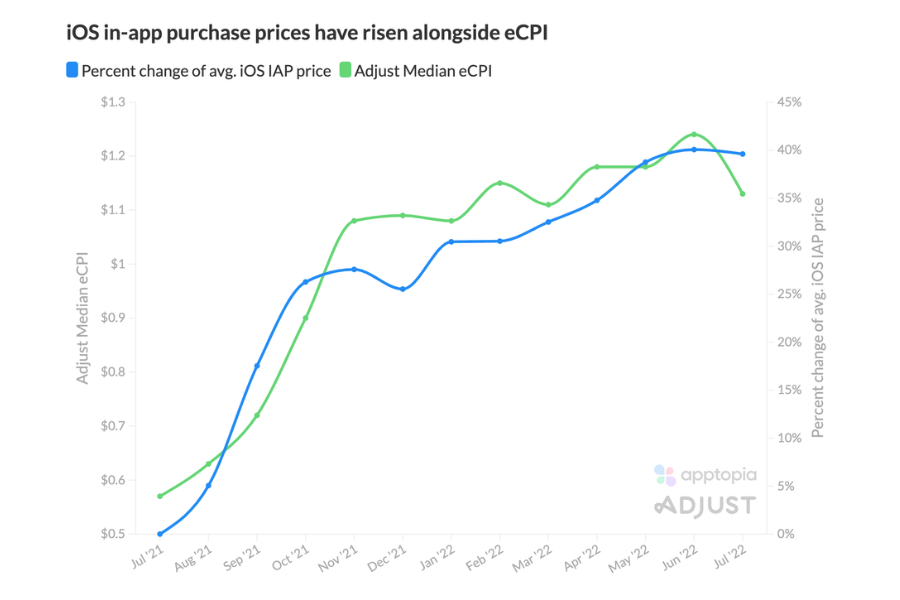
The increase in advertising costs is well-reflected in the rise of the average eCPI (the cost of getting a new user to install an app). According to data by Adjust and Apptopia, as soon as eCPIs started to rise, the same happened with IAP prices on iOS.
This is hardly a coincidence.
The link between increased IAP prices and advertising expenses is more than obvious, demonstrating the enormous impact privacy changes had on every aspect of the mobile industry.
How Different Games Handled Price Increases
Since the price rises came directly from Apple, and not the publishers, this has left them in a tricky situation.
The thing is — they needed to explain the price increases to their players and avoid angry reactions.
Therefore, iOS publishers started communicating these changes to their players. They did this in different ways, and some even decided to offer players something in return.
Here are some interesting examples from popular games.
Azur Lane
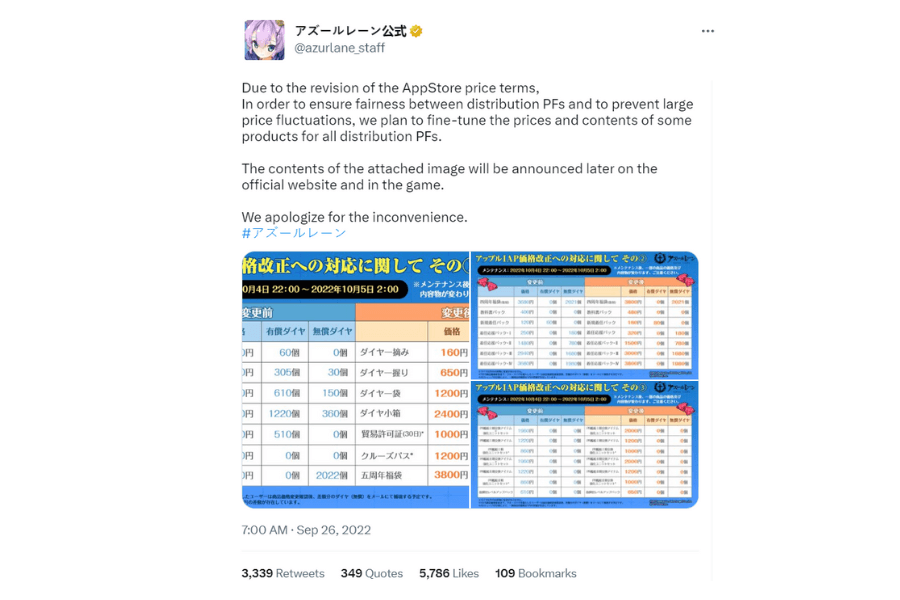
The rise of IAP prices on iOS was unavoidable. To deal with this, many publishers decided on the same strategy — adjusting the values of their IAP packs to the new prices.
One of many publishers who did this was Yostar Limited in Azur Lane. To comply with the new prices, Nintendo increased the amount of premium currency players receive for the new prices. For example, their cheapest pack went from offering 60 Gems to 80 Gems.
This way, the publisher compensated for the price increase, giving players roughly the same value for their money.
League of Legends: Wild Rift
Besides getting affected by Apple’s changes, Riot Games also additionally increased IAP prices on all platforms.

To make the transition as painless as possible for their players, they announced a special promotion.
Before the new prices came into effect, they ran a 17-day-long campaign during which all currency purchases were doubled.
The players’ FOMO kicked in, and the campaign was extremely successful. As a result, the daily revenue increased dramatically. This was especially true for the first and final days of the campaign when their revenues rose by more than 800%.
What About Android?
Ok, so Apple has automatically increased IAP prices, no questions asked.
What happened to those same price points on Android?
The answer is — it depends on the publisher.
For the time being, Google Play has not made a similar move, so IAP prices are entirely up to the publishers. However, it’s worth noting that Google has previously followed suit with App Store rate changes.
Therefore, it’s likely that this will happen again.
The Developers’ Take
There is no consensus among developers and publishers on IAP pricing.
Some of them are applying these changes to Android versions of their games to maintain price consistency. Others have kept the old prices, believing that Android users shouldn’t be expected to foot the bill for Apple’s price increase.
We wanted to find out more about this, so we conducted a survey among 120 developers in game development LinkedIn groups.
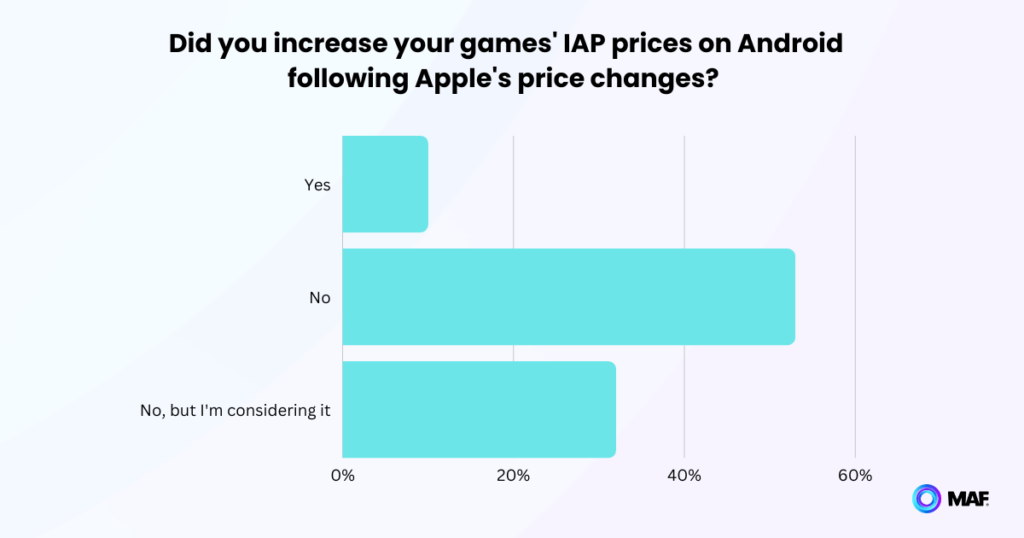
The majority of our respondents have stated that they didn’t increase their IAP prices on Android. However, a sizable portion of them (32%) have expressed that they are considering making this move.
Niantic’s Price Hike
Some big publishers increased Android IAP prices along with iOS prices right off the bat.
One of them was Niantic, the studio behind Pokémon Go.
They announced this with a simple notice on their website, saying they are increasing prices in all the territories affected by Apple’s changes.

Expectedly, long-term Android users are not very happy with this, so they went to discuss this on Reddit. However, it seems like the players accepted these changes relatively well since they didn’t result in review bombing or lowering the game’s Google Play rating.
We’re curious to see if this will encourage other publishers to follow suit.
Wrapping up On IAP Prices in Mobile Games
As you can see, price increases have affected nearly every aspect of our lives, including mobile games.
In 2022 alone, mobile game consumer spending dropped by 5%, according to Data.ai. Will these price hikes help, or are they just making players even more selective in what they buy?
Time will tell.
At the moment, we’re curious to find out:
- if major publishers will apply changes to their IAP prices on Android
- whether Google Play will implement its own rate changes
- how players will react to all of this
Want to stay updated on all of this and keep your mobile gaming knowledge on track? Subscribe to our newsletter!



